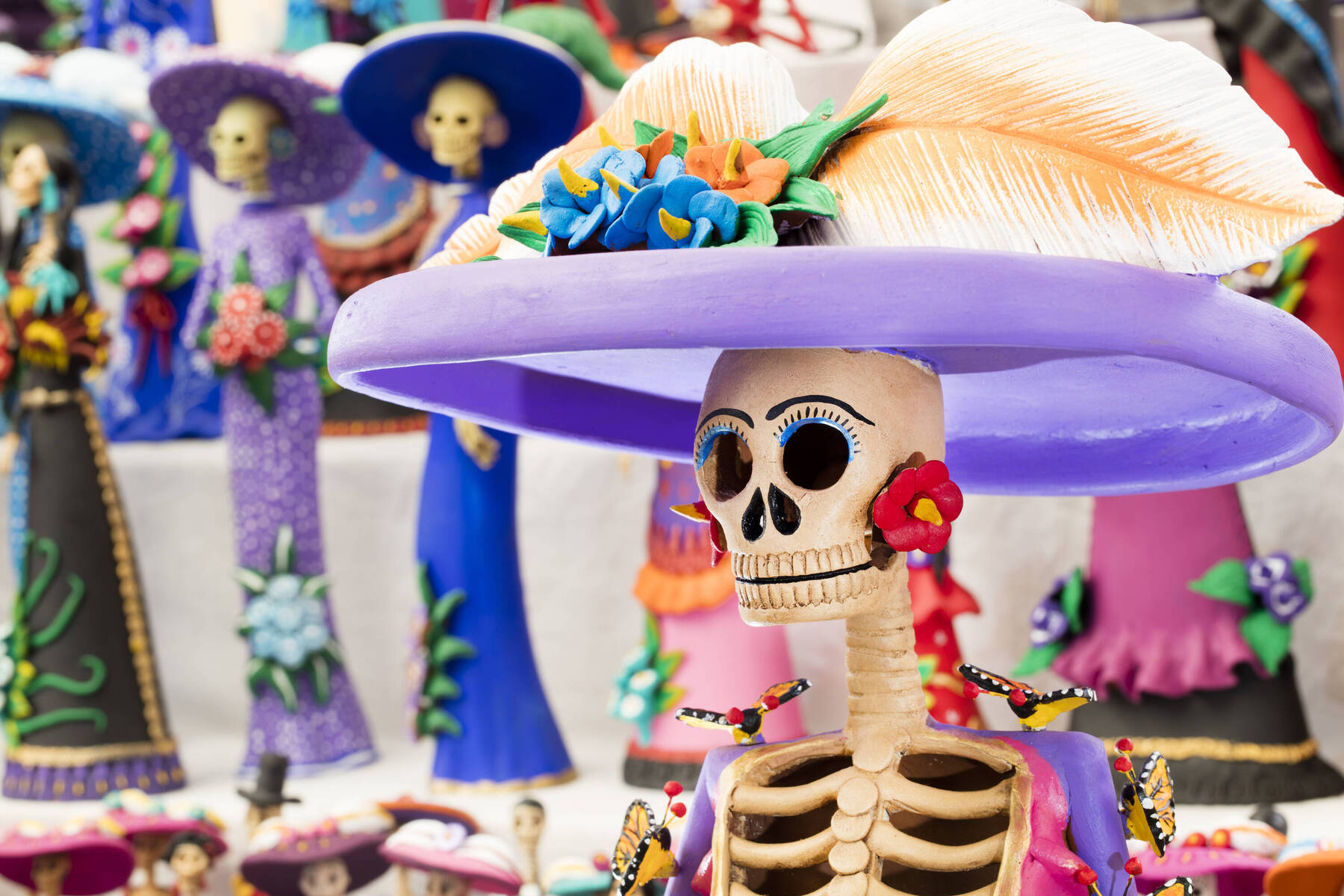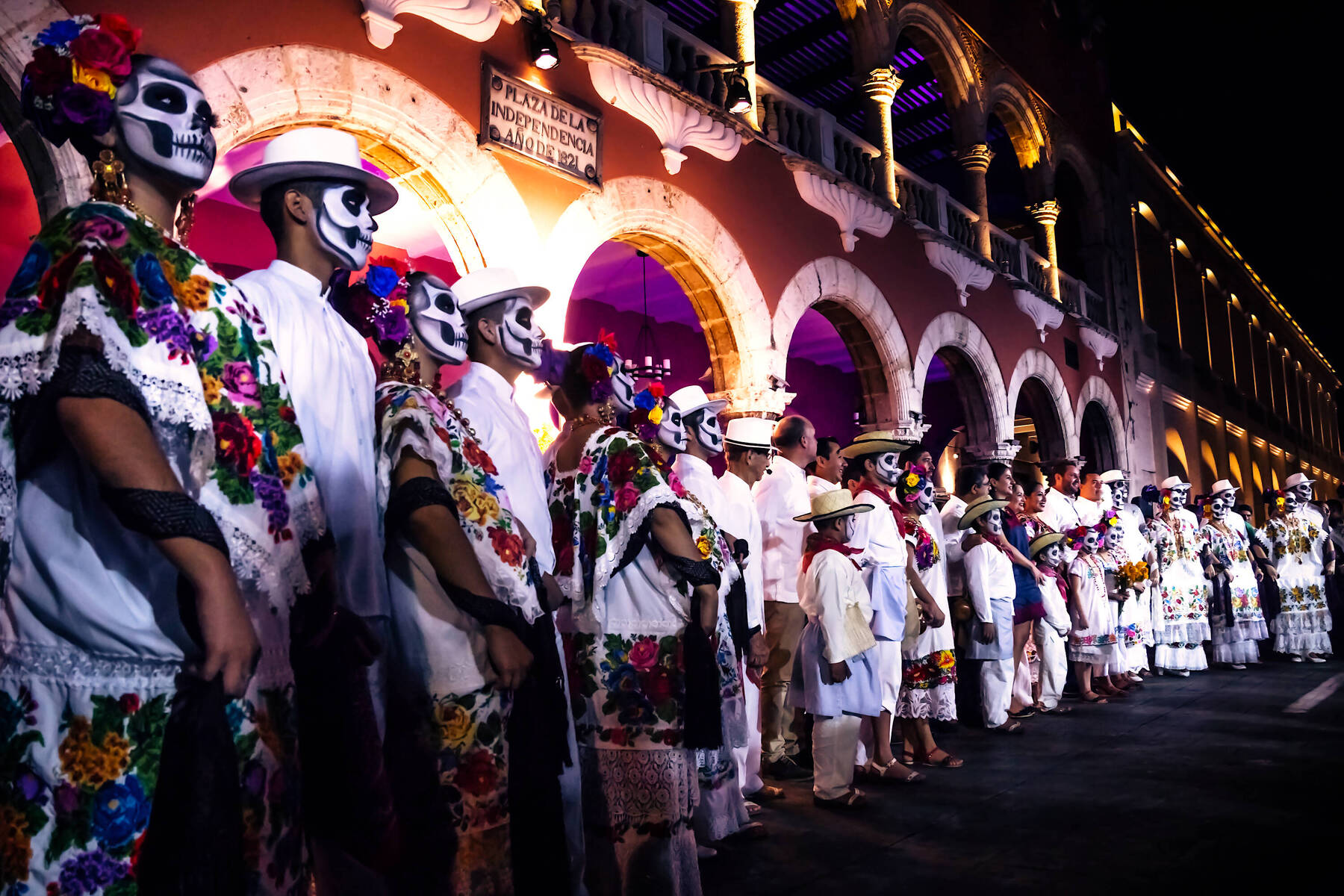Why visit Mexico during the festivities?
Throughout the country, different regions have their own distinctive variations of the festival. Streets are festooned with colourful papel picado, flowers are abundant, and images of skeletons can be seen everywhere. Families gather at the cemeteries to await the return of the spirits. Mexico is fascinating at any time of the year, but is particularly compelling during Dia de Los Muertos.
A few days before the festival, altars start to appear in the streets and public buildings. Each of the altars is dedicated to a specific individual and are lavishly decorated with the deceased’s favourite food or drink along with candles, flowers and a photograph. Papel picado (a string of colourful, intricately cut tissue paper) often adorn the altars. Many of them are nothing less than spectacular. To build their altars, locals shop at vibrant Dia del Los Muertos markets which spring up at the beginning of October.
The fragrance of cempasuchil (marigolds), the official flower of the festival, fills the air and is believed to lead the dead back to the ceremonial altars. Tapetes de arena are elaborately created sand tapestries, often depicting skeletons and can be seen in streets and plazas. Many towns hold contests for the best tapetes and competition is fierce.























Comments